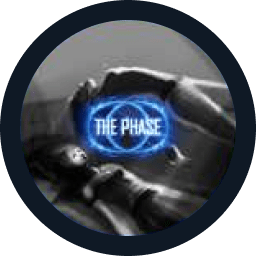As previously mentioned, becoming aware during a dream isn’t the best technique for achieving lucid dreaming, mainly because the required actions aren’t immediately obvious and the resulting awareness is often of lower quality than desired. Still, these methods aren’t as challenging as direct techniques and may suit certain individuals best. However, techniques employed upon waking remain the most effective.
Most global knowledge about this technique has been documented by Stephen LaBerge and Carlos Castaneda. Since my intention isn’t to focus on awareness within dreams specifically, I’ll summarize their internationally acclaimed methods briefly and somewhat exaggeratedly. It’s crucial to highlight that indirect techniques offer faster and easier results, making them an ideal starting point. Interestingly, pursuing indirect techniques can spontaneously trigger dream awareness, eliminating the need for specialized dream-awareness practices.
Essentially, almost all known techniques revolve around three core principles, closely related yet distinct: forming a powerful intention, creating a psychological anchor, and improving dream recall. None of these techniques guarantee immediate lucid dreaming since they’re practiced consistently throughout the day, before sleep, or after waking over a sustained period. Occasionally, results occur on the first night, but typically, it takes several days or weeks (indirect techniques boast an 80% success rate within 1-3 nights).
The goal is to activate an inner force or momentum capable of jolting your consciousness awake precisely when it usually remains dormant—during sleep.
Technique of Forming Intention for Lucid Dreams
Just as indirect techniques heavily depend on the desire formed while falling asleep, cultivating intention for dream awareness is equally critical. Indeed, a strong intention is essential for achieving controlled results. The essence of techniques that create an intense desire or intention to become lucid is to want it so strongly and deeply that it disrupts typical sleep physiology.
The primary difficulty lies in the inability to perform a precise action that establishes intention at the right intensity level. Surprisingly, you might do absolutely nothing and still achieve peak intention.
- First, it’s vital to underline the significance of motivation behind your intention. Frequently, sincere desire alone is sufficient to elevate intention to its maximum. If your goal is dream-based self-healing, vividly contemplate the immense potential this approach unlocks. Understand the uniqueness and necessity of this treatment. Also, remember that even without practical application, you’ll experience some of the most astonishing and fascinating moments imaginable.
- Second, concentrate specifically on intention, maintaining it throughout the day, especially just before falling asleep. Pure intention to recognize dreaming is essentially a profound desire to achieve lucidity at any cost. Motivation helps partly, along with persistent thoughts about it. Pause at least once every two hours amidst daily routines to thoroughly consider your desire to enter a lucid dream. Imagine the process vividly or even write it down to physically reinforce your desire. You could also vocalize it or discuss it with others.
However, the most crucial moment to hold intention is at bedtime. Fully immerse yourself in an intense, genuine desire to achieve lucidity. Superficial intentions expressed merely out of obligation won’t suffice. You must want it wholeheartedly; otherwise, nothing will happen.
This intention becomes especially effective if, after waking during the night or early morning, you fall asleep again. During these periods, your body is naturally inclined toward dreaming, making your intention exceptionally potent.
Anchor Creation Technique
This technique involves creating psychological momentum that carries over into your dreams, transforming ordinary dreams into lucid experiences. Throughout the day, consistently notice something frequently encountered. Each time this object appears, briefly pause and genuinely question whether your surroundings are reality or a dream. You might even try to fly. After several days, encountering this object in a dream triggers your habit of questioning reality, causing realization that you’re dreaming. The desire to fly, practiced previously, may finally succeed.
Instead of reinventing the wheel, we’ll use the universally accepted example: your own hands. Suppose you’ve chosen your hands as your anchor for dream awareness. Throughout each day, whenever you notice your hands, swiftly and honestly ask yourself, “Am I dreaming?” Persistently repeat this daily practice until, eventually, noticing your hands in a dream prompts lucidity.
Any consistent object works, provided it frequently appears both in reality and in dreams.
Dream Recall Technique
There’s a common misconception that some people don’t dream. This is entirely false. The real issue isn’t absence of dreams but the failure to remember them. Even regular dreamers recall only a fraction of their nightly dreams. Hence, don’t assume that lacking dream memories prevents achieving lucidity. Instead, experiment with various recall methods.
Indeed, a direct correlation exists between lucid dream likelihood and dream recall quantity. Thus, dream recall improvement is vital. Essentially, this involves developing short-term memory during sleep. Consciousness exists in dreams but without quick access to short-term memory; you know who you are and how to act, but struggle connecting current events to previous moments or understanding their significance.
Enhancing dream recall involves three methods:
- Firstly, upon waking, deliberately recall as many dreams as possible. This initial recollection must be thorough and attentive to strengthen memory. Revisit dreams during the day or before sleep, reinforcing recall.
- Secondly, writing dreams down in a dedicated dream diary significantly boosts recall and consciousness. Morning recordings, detailed as possible, substantially enhance effectiveness. Regularly reviewing past entries further boosts awareness.
- Thirdly, a more advanced approach involves creating a dream map. Similar to diary-keeping but with greater awareness, you attempt to connect dream events geographically. After several entries, overlapping dream locations form a coherent dream-world map, significantly improving recall and lucidity over time.
For optimal results, briefly jotting down dreams during brief nighttime awakenings aids subsequent detailed recall upon final waking.
Initially, practicing dream recall increases the volume of remembered dreams rapidly. As dream quantity grows (5-10 per night), lucid moments occur regularly.










